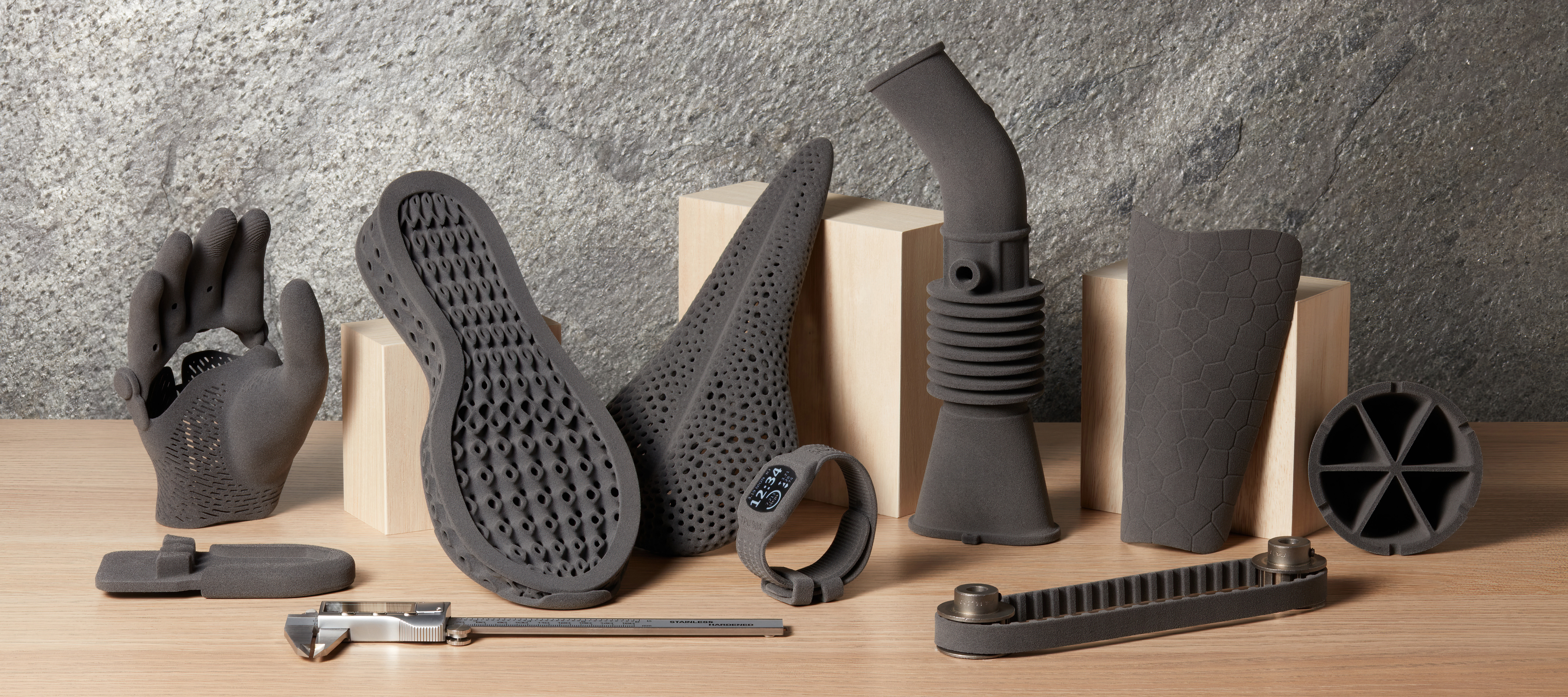Formlabs Launches Flexible Material to Expand AM Applications
New material lets users of the Fuse Series printers produce truly flexible parts.

TPU 90A Powder is the first elastomer material for the Formlabs Fuse Series 3D printers. Image Courtesy of Formlabs
Latest News
March 28, 2023
In a bid to expand the capabilities and applications of 3D printing, Formlabs has released TPU 90A Powder, a new flexible and durable elastomer material that helps establish AM as an alternative or supplement to traditional manufacturing methods.
Formlabs has offered a range of four Nylon-based materials in its SLS material libraries with options ranging from highly rigid glass or carbon fiber-filled powders to a more ductile Nylon 11 Powder. With the introduction of TPU 90A Powder, available for the Fuse Series SLS (Selective Laser Sintering) family of 3D printers, Formlabs is expanding the possibilities for 3D printing across a range of industries, enabling users to create flexible, skin-safe parts that can be tailored for specific applications.
For example, the TPU 90A Powder opens up applications for engineering and manufacturing, including the production of seals, vibration dampers, soft-touch elements for grippers, as well as ergonomic features. The material’s skin-safe properties make it a viable option for producing custom parts for healthcare and consumer goods applications, including medical appliances and wearable accessories, according to Chris Haid, Formlabs hardware product manager. TPU 90A Powder’s softness and flexibility is designed to ensure optimal comfort and performance, improving outcomes in patient care and streamlining the medical device manufacturing process, Haid says.
TPU 90A Powder also helps manufacturers bridge the gap between manufacturing stages, allowing them to produce a small volume of end-use parts before they are mass produced with traditional methods. “This process, commonly referred to as bridge manufacturing is a valuable tool for testing parts and ensuring optimal product performance,” Haid explains. “By facilitating a seamless transition from rapid prototyping to mass production, manufacturers can save time and resources while improving product quality. With bridge manufacturing, companies can confidently refine designs, perfect their manufacturing process, and bring products to market with greater efficiency and precision.”
Another benefit of the new material is the ability to print flexible, durable, and skin-safe parts in-house, making manufacturing faster, more affordable, and more accessible. “Parts made via traditional manufacturing methods are often outsourced as the simple solution to purchasing expensive equipment, however, relying on outsourcing for many manufacturing stages leads to longer production times and higher costs, Haid says.
Watch this video to learn more about TPU 90A Powder.
More Formlabs Coverage
Subscribe to our FREE magazine, FREE email newsletters or both!
Latest News
About the Author
Beth Stackpole is a contributing editor to Digital Engineering. Send e-mail about this article to DE-Editors@digitaleng.news.
Follow DE





